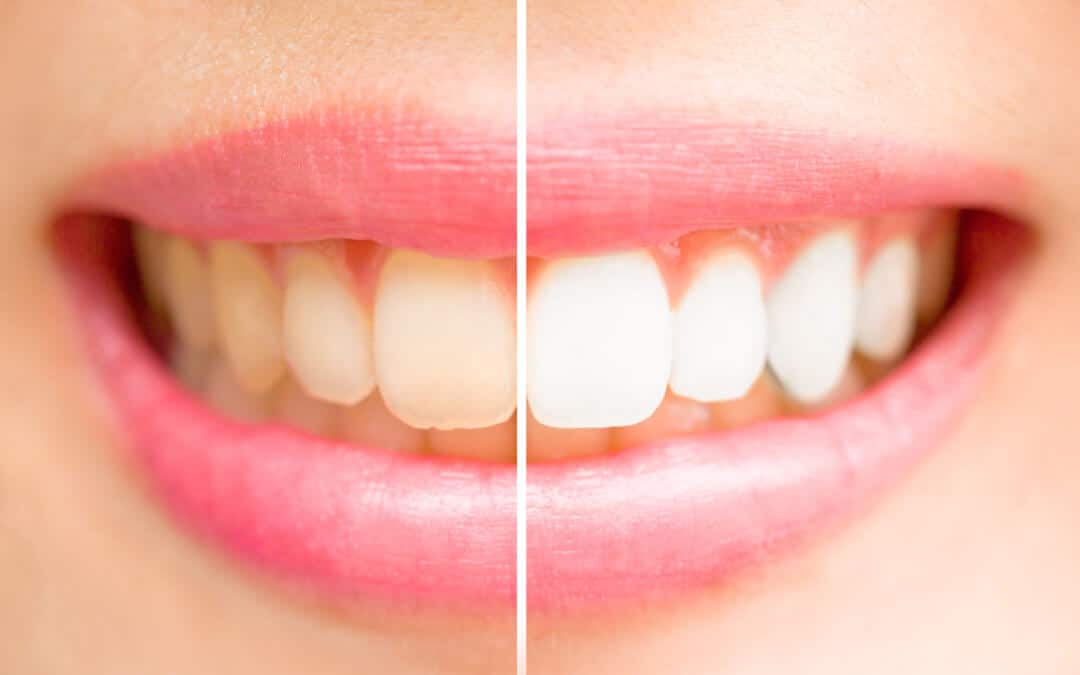First impressions matter and you don’t want to ruin them by worrying about your teeth. You should never be afraid or embarrassed to smile. If your teeth look discolored, you’ve likely already looked into how to whiten teeth.
When it comes to turning your smile pearly white, you’ve got options. For starters, these include seeing what treatments your dentist can provide. They have all the tools and knowledge required to help treat your discolored teeth.
Whitening at home is also an option, with evermore products hitting the shelves. It’s important to know what works and to have realistic expectations. In either case, consulting with your dentist will help you make a plan that works for you.
For a complete guide on how to whiten teeth, read on.
What Causes Discoloration in the First Place?
You’ve likely heard that white isn’t the natural color of our teeth. That’s both true and false. Our teeth have layers of enamel and dentin, the first of which is white and the second of which is yellowish.
The enamel is the outer protective layer of your teeth, while dentin is an inner protective layer. Because the enamel is somewhat translucent, the darker-colored dentin can come through sometimes. Proper oral health is important for keeping your enamel strong and as white as possible.
What you eat, drink, and consume has the biggest impact on tooth color. Coffee and wine are famous for staining teeth, which they do by attaching to your enamel. Smoking can also lead to discoloration as tar and nicotine are major staining agents.
Certain things you consume can also be acidic, contributing to enamel erosion. The less enamel, the more the yellowish shades of your dentin will show. If you suffer tooth damage or trauma, such as a chip, your tooth might create a fresh layer of dentin as protection – enhancing the yellowness.
Some meds or medical treatments can also lead to discoloration. Because of this, it’s important to talk to your healthcare professional if it’s a concern. The final consideration is age as the older you get the more your enamel will naturally thin.
Going to the Dentist
Teeth whitening is something that every dentist can do. Depending on preference and the nature of the discoloration, you have several options. One longer-term method is to use a bleaching gel on the teeth over several weeks.
This process involves making a molded tray of your teeth and using that to apply the gel. Anyone who had fluoride applied to their teeth using a styrofoam tray will be familiar with the idea. You can also opt for bleaching at the dentist’s office, which often doesn’t take more than a single visit.
This involves the dentist applying some bleaching agent to your teeth. Your gums are always protected during this process, either by a rubber shield or protective gel. A third option is laser whitening.
Laser whitening is fast – approximately 1 hour. It starts with your dentist applying a special bleaching agent to your teeth. The laser will then hit the bleach, activating it and whitening your teeth.
In addition to these, there are scores more cosmetic dentistry options for whitening. A professional dentist can talk to you about available treatments and develop a comprehensive plan that works for you.
Whitening At Home
While a dentist is best equipped to diagnose and treat your oral health concerns, there are ways to whiten your teeth at home as well. It’s important to remember though, that these options aren’t replacements for the dentist. You should still go for regular check-ups and seek advice if you have any concerns.
The options for how to whiten teeth at home are overwhelming. Whitening strips are becoming more popular, including special natural versions for sensitive teeth. These work by sticking to your teeth and having bleaching agents in them to whiten.
More fancy versions come with a blue light that you can shine on the strips to activate it more. This ensures it hits the enamel. You apply it for about an hour and, although not as effective as the laser option, works on the same principle.
The most budget-friendly options are ones everyone is familiar with: whitening toothpaste. These come in a variety of types, strengths, and brands. The most common whitening agents used are hydrogen peroxide and baking soda.
Whitening toothpaste works well for dealing with typical stains on your teeth. For more intense discoloration caused by nicotine or weakened enamel, you need more. Products that help strengthen and rebuild enamel are always good reinforcements
If all else fails, consult with your dentist about more effective treatments.
Considerations and After Care
Whitening treatments will be most noticeable on those with very yellow teeth. That said, not every treatment will work for every patient. You could be sensitive or allergic to bleaching agents or gels.
There might also be oral concerns that need to get addressed first, like gum disease. At the end of the day, a healthy smile is what’s most important. This is why consulting a professional is important.
Trying to do intensive treatments at home has the potential to do more harm than good. Once you find a treatment solution that works for you, you need to also work to keep your teeth white. It’s important to be extra careful for the first day after whitening to make sure it sticks.
Avoid food and drink that can stain your teeth for at least 24 hours. The same goes for anything acidic, sugary, or with added coloring. Once it’s safe, try not to go crazy with things that stain your teeth or erode your enamel.
Brush often, keep your dental appointments, and pay attention to your oral health.
How to Whiten Teeth
Whether you whiten your teeth at home or at the dentist’s office, care and knowledge are key. Always consult a professional before doing anything intensive. They know best how to whiten teeth in a safe and effective way.
It’s also important to know what causes discoloration and how to avoid or mitigate it. A good dentist helps, and at Carolina Smiles, we’re some of the best. Give us a call or swing by our office and see the difference a whiter smile can make.

